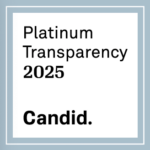While groups expressed overwhelming support for the US Food and Drug Administration’s (FDA’s) draft guidance expanding eligibility criteria for investigational oncology trials, some comments discouraged the agency from taking an approach that dichotomizes the curative and non-curative setting; a pharmaceutical firm suggested that safety data be combined for some investigations performed in curative and non-curative settings.
Among the recommendations of the draft guidance, issued in June, is the provision that patients with incurable cancers may be included in clinical trials for investigational cancer therapies, regardless of whether they have received available treatments. The guidance makes clear that patients must be provided with “adequate information to make an informed decision on trial participation.” (RELATED: FDA calls for inclusion of patients with incurable cancers in oncology trials, Regulatory Focus 24 June 2021).
The agency received six comments on the draft guidance, from various medical and patient associations, a patient advocacy organization and a drug manufacturer. All respondents supported the expansion.
The American Society of Hematology said in its comments that the guideline “will allow hematologists to recommend the best possible treatment path for their patients, which could be participating in a clinical trial rather than being required to first use existing treatments that might be suboptimal for them. This is important because in some hematologic malignancy trials exposing patients to available, but not curable or marginally effective treatments may result in patients being ineligible to participate in clinical trials later.”
The Shepherd Foundation said in its comments that it “strongly supports” the guidance as it “expands access to cutting-edge therapies.” The guidance, said that group, is a “step toward reducing the percentage of patients that lack effective treatment options.” The foundation is a non-profit focused on developing cures for rare cancers.
Yet one respondent, Bristol-Myers Squibb (BMS), took issue with the guidance’s criteria that investigational drugs be separately studied among patients who have received available therapies and those that have not. In their comments, BMS said that these groups should in some cases be studied together to lend more statistical power to investigational treatments.
The guidance recommends that sponsors evaluate patients who have received available therapy and those who have not be studied in two separate cohorts “particularly if interpretation of efficacy results requires a homogenous patient population.”
BMS said that “the recommendation to evaluate separately patients who have received certain prior available therapy(ies) and those who have not for the purpose of efficacy assessment is clear. However, we propose that it may often be appropriate for the assessment of safety, such as in a Phase 1 dose escalation study, to evaluate patients with heterogenous prior therapy history together. The small size of dose escalation cohorts renders subgroup analysis impractical. The ability to evaluate dosing in heterogenous groups of patients (defined by prior receipt of avaialble therapy) together, would allow sposnors to more easily adopt the expanded patient eligibility criteria into earlier stages of development.”
BMS added that for safety assessments in a Phase 1 dose escalation study, it may be appropriate “to evaluate subjects with heterogenous prior therapy history together.”
The Association for Clinical Oncology (ASCO) and the Friends of Cancer Research said in their joint comment that the dichotomy between curative and non-curative may be overly reductive.
“Reducing potential therapeutic options to curative versus non-curative may neglect other important factors patients consider when seeking a therapy that extend beyond the potential for a ‘cure,’ such as delayed progression or improved quality of life, and suggest that adding these factors would add clarity,” wrote the organizations.
FDA’s draft guidance
Comments on FDA’s draft guidance

